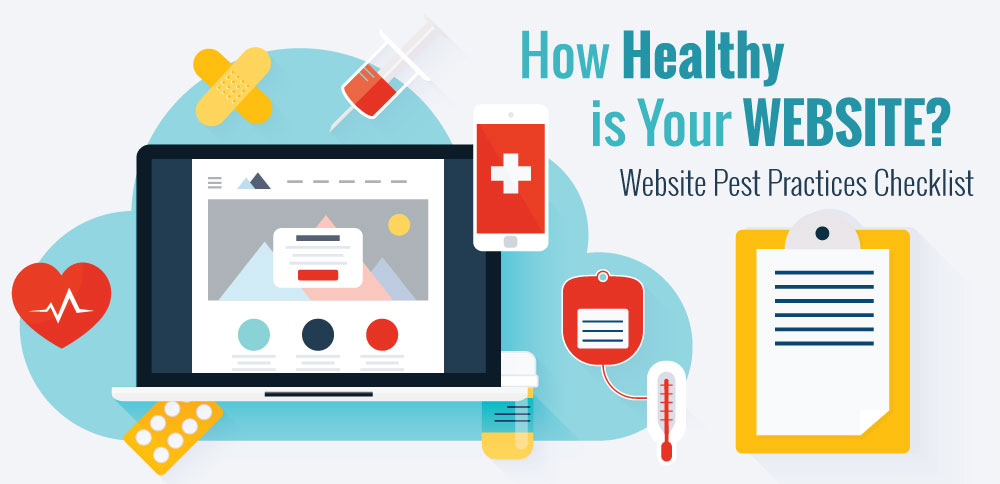Anatomy of a Healthy Website

Website best practices checklist for a healthy website:
Your website is your number one marketing asset, so a well made website is integral to the success of your business. Check out our website best practices checklist and give your site a check-up!
1. Have a Clear Call to Action
Your audience won’t likely sit down to read your website like a novel. They will scan it to find the information they’re looking for in order to make an informed decision or impression about your business. Command attention to the most critical aspects of your website that generates leads, purchases, or exposure at the very beginning of your site. Your call to action (CTA) button could be “Contact us to apply today” or “Book your tour today“, but make sure it stands out to your audience and is easy to locate. And make sure your button can be tapped with a thumb. Which leads neatly into…
2. Be Fully Responsive / Mobile Friendly
A “responsive website” means that it responds to the size of the screen you’re using, so it’s easily viewed and navigated on a smartphone or tablet. As of 2015, more searches are performed on mobile devices than on desktop computers. We cannot stress enough the importance of a mobile-friendly website! There are WordPress plugins such as WPtouch to make your current WordPress website more mobile friendly. That can be a good temporary fix, but your design wonlt always transfer nicely with just a plugin, so it’s best to start with a responsive website design.
3. Include an Clear & Consistent Navigation
Don’t make your user jump through hoops in order to find the information they’re searching for or they will leave your site with a bad experience. Website best practices are to include the most relevant information in the navigation. We suggest including your About, Services, Contact, and Blog pages to start, and you might consider putting your phone number and social links in the header as well. Don’t overstuff your navigation with information, or your customer could get overwhelmed. Check out our tutorial on editing your WordPress navigation menu.
4. Make Google Happy
97% of consumers will Google your business to decide if they want to do business with you. Your job is to think like your target customer and include key search terms throughout your website. Be careful, though! Overloading your website with keywords until it doesn’t make sense is called keyword stuffing and could get you banned from search engine results pages (SERPS). Also, be sure your website loads fast. Google wants the whole web to load instantly. You can test your site with their page speed insights.
5. Design for Conversion
In website terms, conversion refers to the process of converting traffic from your website into paying customers. The elements of encouraging conversion include an email sign up form, call to action button using action verbs (such as “get yours today” or “book now”), or a simplified shop page for your e-commerce store. Website best practices say to keep elements that increase your conversion rate “above the fold” on your landing page. This means that they are visible before the user begins scrolling down the site. You can easily track your conversion rate by creating a custom report in Google Analytics or get us to set one up for you.
6. Credibility
Your potential customer wants to know that they can trust you before doing business with you. Put their mind at ease with testimonials, regular informational blog posts establishing yourself as a leader in your field, or coverage of your business in the press. Check out our blog post about claiming your business’ online reviews!
7. Social Media Links
The purpose of social media is to engage with your audience on a personal level and to bring them to your website, where you can control the conversation and ultimately convert leads into customers. Be sure to include easily recognizable social media icons on your header or social live feeds in your sidebar to make it easy for potential customers to connect.
Worried about keeping your computer healthy, and protected from viruses? Read our blog post on how to detect an email virus.
